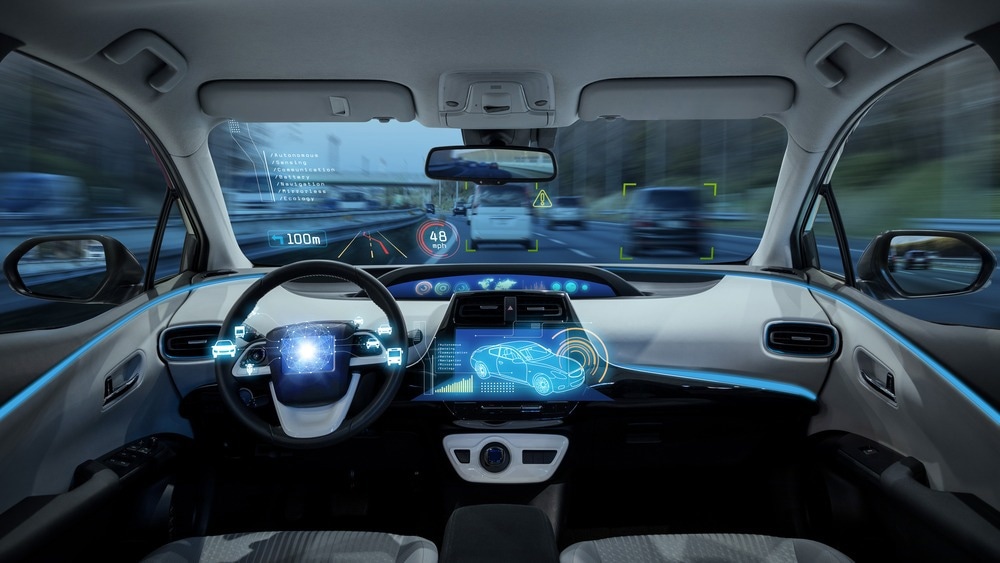This article will look at driverless vehicle technologies and how Indigo Drive, an innovative autonomous vehicle system, could provide a novel solution to the needs of many sectors.

Image Credit: metamorworks/Shutterstock.com
The Rise of Driverless Vehicles
Once considered the realm of science fiction, driverless, autonomous vehicles are coming closer to reality in the 21st century. Just a few decades ago, it would have seemed impossible to imagine vehicles zipping around the country without a human at the wheel, but recent advances in multiple technologies have provided vast potential in the field.
A key moment in the history of autonomous vehicle technology came when Google introduced its driverless car in 2007, and the company is constantly working to improve the reliability and safety of its technologies. Arguably, Google has the most mature technology in the field, but other major carmakers like Ford and Toyota are working on their autonomous vehicles.
Many vehicles already incorporate several driverless technology elements, such as adaptive cruise control, parking assistance sensors, lane management systems, and self-adjusting controls for speed. Recently, states, including California, Nevada, Florida, and Michigan, have introduced laws that permit fully-driverless vehicles, which has accelerated the interest of many companies in the technology.
Autonomous vehicles offer several benefits, such as driver comfort, convenience, improved road safety, highly efficient performance, reduced maintenance and running costs, and reduced commute times. While challenges still exist with the technology, the potential for driverless vehicles to be a disruptive advance in transportation is clear.
Beyond domestic transportation, driverless vehicles have gained interest in sectors such as freight transportation and heavy industry (such as mining) due to cost savings, efficiency enhancements, improved safety and the ability to perform functions such as improved freight and payload tracking.
The Use of Sensors in this Technology
A central element of all driverless vehicle technologies is their suite of advanced and highly efficient sensors. These sensors play many roles within an autonomous system and are essentially its eyes.
Examples of sensors employed in autonomous vehicles include short-range, mid-range, and long-range sensors. Technologies such as LiDAR, biometric sensors, ultrasonic sensors, microphones, laser scanners, millimeter-wave radar, and cameras providing directional and 360o fields of view are commonly used in integrated driverless vehicle systems.
LiDAR is a key technology in driverless systems as it provides benefits such as superior range resolution, speed resolution, angular resolution, rich data acquisition, can work in multiple environments, and possesses strong anti-interference abilities. Reliable, efficient sensor technology significantly improves the safety and performance of driverless systems.

Image Credit: Zapp2Photo/Shutterstock.com
What is Indigo Drive?
Indigo Drive, developed by ABD Solutions, works differently than conventional driverless technologies. The system can be used to enhance current fleets with fully-driverless capabilities by being installed in vehicles already in use. This provides the benefit of companies not having to replace entire fleets, saving them downtime and money.
This solution is a modular software eco-system that can be integrated with current software, such as fleet management systems and can give companies a driverless fleet in a much more smooth and fast manner than other technological solutions.
Indigo Drive has already been proposed for the mining sector, but this technology can be extended to other critical industries, such as freight transportation. The mining industry can especially benefit from this system due to significant improvements in worker safety, reduced labor costs, and advanced data gathering and automation capabilities, which are key concerns in the sector at the moment.
What Technologies are Incorporated in Indigo Drive?
Several technologies, including a suite of sensors, are incorporated into ABD Solution’s Indigo Drive technology. This comprehensive autonomous vehicle system is secure and certified. A user-friendly software interface is included, which can be used for route and task planning.
Reliable obstacle detection capabilities are provided by cameras, LiDAR, and radar sensors. Advanced diagnostics and vehicle health monitoring capabilities are supported in the system by sensors, telemetry, and OBD2 technologies. Communication is provided by V2X, radio, and GPS. Vehicle movement is provided by technologies like advanced robotics and drive-by-wire solutions.
Operational data from Indigo Drive’s advanced suite of sensors can be fed back to engineers and fleet operations managers, providing information on the vehicle’s location, fuel levels, distance to the target, and diagnostic status. The wealth of information gathered can help aid logistics planning, scheduling, and operational decisions.
Future Outlook: Toward New Horizons
The global autonomous vehicle market is predicted to grow rapidly over the next few years. In 2019, the global market was valued at $21.4 billion. While conventional human-operated vehicles with incorporated driverless systems are predicted to become more commonplace over the coming decade, fully driverless systems still face critical challenges which hinder their widespread commercial viability.
Key issues with fully-autonomous vehicles include safety and data protection, with the risk of cyber attacks presenting a critical threat to the sector. Addressing these concerns could see the market reach around $60 billion by 2030, according to some experts.
Limiting the cost and operational expense of replacing current fleets is a crucial concern for companies in multiple industrial sectors. However, with its modular approach that can be used to retrofit current vehicle fleets with autonomous functionalities, Indigo Drive is one innovative solution that may help accelerate the adoption of driverless vehicles in the commercial sector.
References and Further Reading
AGG-Net (website) Indigo Drive enables existing fleets to become driverless [online] agg-net.com. Available at: https://www.agg-net.com/news/indigo-drive-enables-existing-fleets-to-become-driverless
Houghton, L (2015) All You Need to Know About Driverless Cars [online] globalcarsbrands.com. Available at: https://www.globalcarsbrands.com/driverless-cars/
Neuvition, Inc. (2021) What Autonomous Vehicle Sensors do Driverless Cars Use? [online] neuvition.com. Available at: https://www.neuvition.com/media/blog/autonomous-vehicle-sensors.html
Concannon Business Consulting (2021) The Future Outlook of Autonomous Vehicles [online] concannonbc.com. Available at: https://www.concannonbc.com/the-future-outlook-of-autonomous-vehicles/
Disclaimer: The views expressed here are those of the author expressed in their private capacity and do not necessarily represent the views of AZoM.com Limited T/A AZoNetwork the owner and operator of this website. This disclaimer forms part of the Terms and conditions of use of this website.